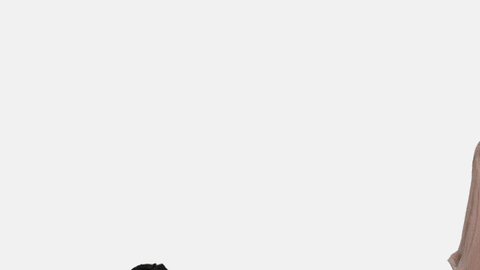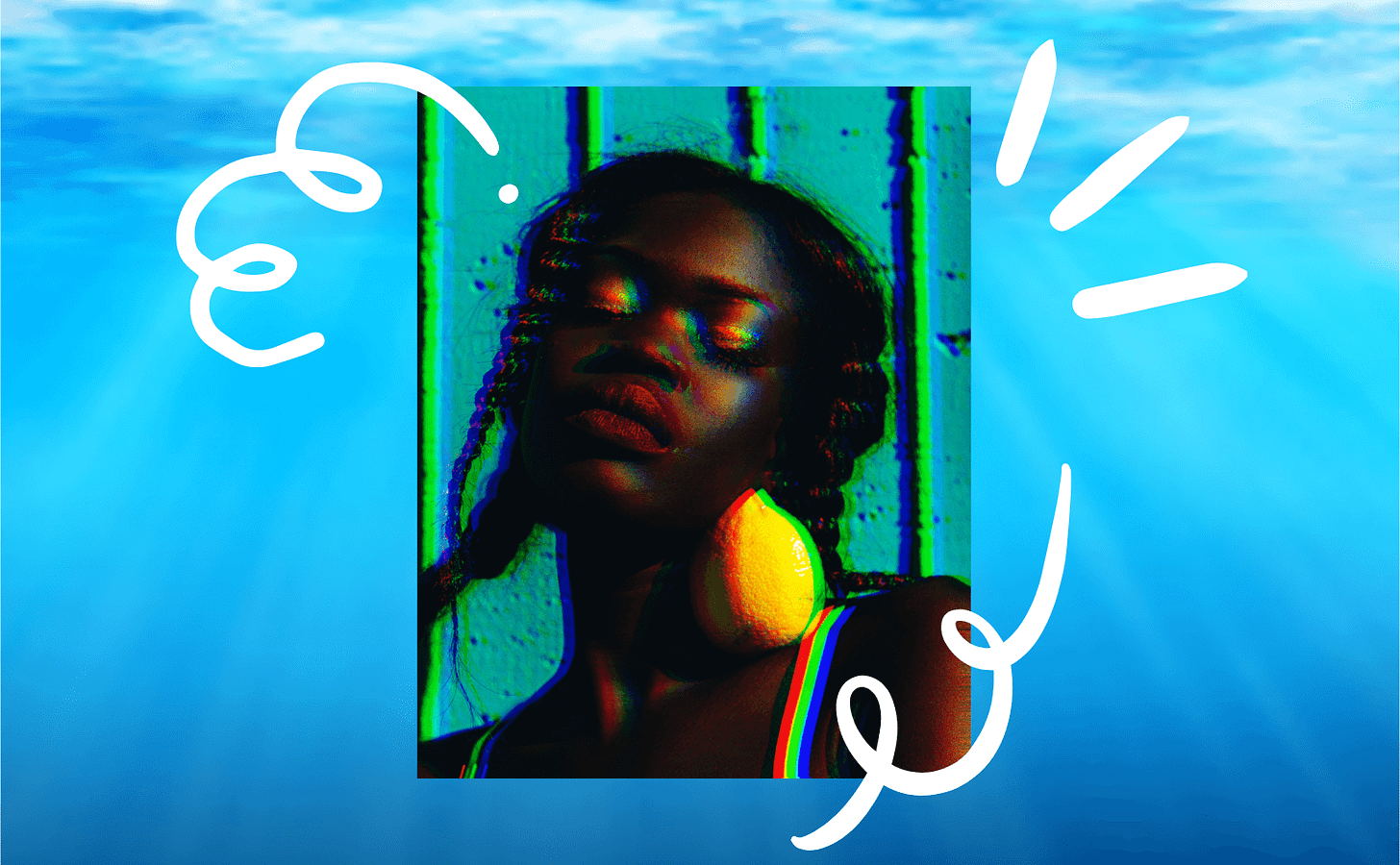Hey y’all,
So, I moved to Mexico!
In the spirit of being carefree (wink), I decided that now was as good as a time as ever to pick up and head to the tropical waters of the Quintana Roo and be about this digital nomad life. While Mexico is not perfect (and I’m fully aware of the privilege I have to do this), I am really enjoying myself. I plan to still consistently drop stories, but bear with me if there are story-less weeks here and there. I’ll always give you a heads up on our Twitter & IG!
PS - Shoutout to everyone who did last week’s writing prompt!
This Week’s Story
There is a clip from My 600-lb Life going around where a Black woman is eating so much food that she needed an extremely large plate to eat it all. Twitter had all the jokes about this abnormally large plate and the fact that her mom, who was eating next to her, barely got to eat any food. While this show is purely for entertainment purposes, this clip made me think about this week’s essay and what eating disorders look like for Black women on both sides of the spectrum.
The title of this email is a widely held assumption about who actually suffers from eating disorders. But with the weight of expectations placed on how Black women’s bodies should look in order to be acceptable, it’s almost surprising that it’s still considered a disease that only plagues white women. I hope this essay will not only help you reimagine the eating disorder stereotype, but ultimately remember that all bodies are good bodies, especially yours.
Take care,
Anayo
EIC of Carefree
Not Sick Enough: Reclaiming My Body After Ten Years of Eating Disorders
by Anonymous
Trigger warning: discussion of eating disorder behaviours and numbers.
Last year, I went to the hospital with persistent abdominal pain. Going through triage, I stood on the scale.
“You’ve gained weight since you were last here,” the nurse helpfully quipped. If it warranted a mention, you would think it had something to do with the abdominal pain I was there to get checked, but no; she just wanted to let me know that I had gotten fat.
I weigh 123 pounds depending on what time of day I weigh myself. At 165 centimeters tall, my BMI is on the slightly lower side of normal according to the standard laid out by the World Health Organisation. At my heaviest, the same standard labeled me ‘overweight’.
For about ten years spanning my teens through adulthood, I dealt with eating disorders. I did it all: starved, restricted, binged, and purged. I was sick, my psychologist said so.
The only problem was, eating disorders don’t occur outside Western, white environments. Andthe person who got this illness is an African girl growing up comfortably middle class in an African capital city.
Current eating disorder education acknowledges a much wider risk group, including men and people who are ‘normal’ or ‘overweight’. When I was suffering, however, I wasn’t supposed to be, not in that way.
The diagnostic standards for my illness delegitimized my suffering which meant it was “never that serious”, not even when I was pulled out of school and put in counseling. Not when I had fainting spells and lost my period. Not when my glands swelled or when my skin was grey from a lack of nutrition.
I knew what eating disorders were before I had one. They were the dramatics of white girls and women who just needed to be a size zero. They were attention-seeking. They weren’t a big deal, just a quick diet. In reality, they are a much larger manifestation of psychological pain. Still, the diagnosis didn’t belong to people like me.
In real life, all the women I’ve known with eating disorders are African, both on the continent and in the diaspora. In real life, racial and gender stereotyping leads to fewer non-white sufferers getting help.
I don’t remember a time when my body ever felt like a home. As a child, I regarded my body as nothing but the limbs, muscles, and sinew that got me from place A to place B.
I was bigger than a lot of my classmates. Not fat, but solid—thick. I had thick thighs and calves. I had large butt and hips. I was on the taller side and was developing underarm and pubic hair before a lot of them too. My appetite during puberty skyrocketed and I began to eat like my next meal wasn’t guaranteed. I would eat plate after plate of food until my stomach was distended and I felt pain.
I don’t know what made me do it but after one of these meals, I went to the bathroom and threw up. I spent the next ten years starving, restricting, binging, and purging to various degrees of seriousness. Once, I was 40 pounds heavier than my starting weight, and then 20 pounds lighter. At every point, however, I was deeply depressed, very sick, and unaware of both.
Studying abroad for grad school, I saw my first ‘support a starving African child with just 30 cents a day’ ads on television and I thought I was in the Twilight Zone. It was never lost on me that as an African, in a country where food insecurity affected millions, refusing food and purging the food I accepted was in extremely bad taste. I was brought up not to waste food, not because of any starving African children but more because wastefulness was bad.
I was being a bad African by acting out rich white woman dramatics, refusing to eat. I was being a bad woman for being too skinny and then too fat at different points of my illness. I was being a bad person because I was isolated by mental illness.
Existing all over the map of bodily desirability, I was too ill to even cash in on the attention when the getting was good. The disordered thought patterns and comorbidities placed me firmly outside of normal life. I actively stifled my potential and held myself back both because I couldn’t and because I wouldn’t take the risks.
Now recovered, I didn’t anticipate diet culture’s accepted attitudes around food and its disturbing similarities to eating disorder philosophy. Cake is okay to eat when you’re already thin or are planning to ‘burn it off’ later. Dessert is a treat for when you’ve been good.
Maybe that was why it took ten years to finally get on the other side of healthy, but judging the material, ‘healthy’ attitudes around food very often are not. Food and eating are wrapped up in respectability, power, and privilege which made my place as an eating disorder sufferer even more anatopic.
What we eat is extremely personal. Diet is a battleground because there is no lack of guidance (or coercion) on what we should eat, how much, and for what reasons. Until health isn’t limited to the number of calories on a plate and includes the thoughts and attitudes surrounding those foods, it doesn’t pass muster. My weight was normal many times while my mind was diseased. Normal doesn’t equal healthy.
After an eating disorder, recognizing hunger and responding appropriately is a victory. Eating ‘bad’ food without guilt is a victory. Enjoying food because it is more than just calories is a victory. Eating disorders are, at their most basic level, about control but I wasn’t under control in the way that I believed. I inhabited myself in the most tangential way. My eyes, hair, neck, breasts were as much living, vital parts of myself as were bricks in a building or leaves on the ground.
At this point, I live within my body in relative peace. I don’t hurt myself with food and I’ve stopped obsessing about ways to do it. I can appreciate foods as being a manifestation of history, culture, and migration, and much more; sometimes eaten for no other reason than they taste good. I know that a brownie, eaten with ice cream, ordered on a date that’s going well so we can spend more time together is not going to kill me. I was smaller in the past but my health, bodily and mental isn’t worth being that sick again.
Enjoyed this week's storyletter? Tap the heart & leave a comment below! 😍
Share on Twitter | Share on Facebook | Share via email | View past stories








Yea, eating disorder is very real. Society doesn’t pay attention to non-whites that are equally struggling because somehow Blacks should be exempted from it.